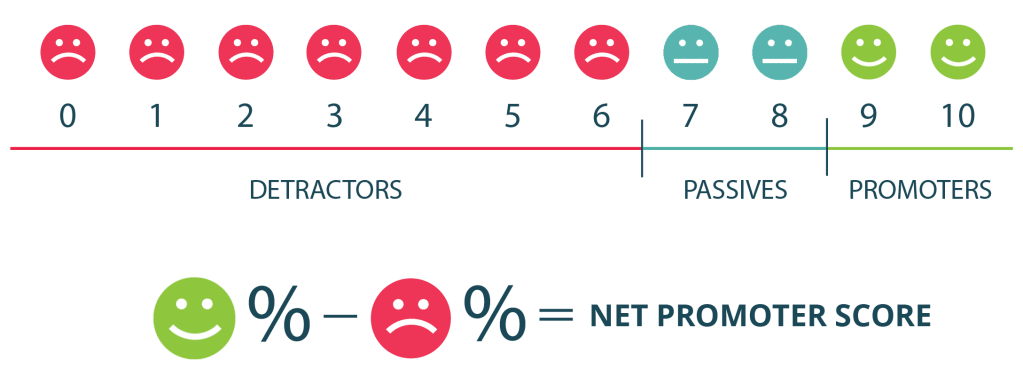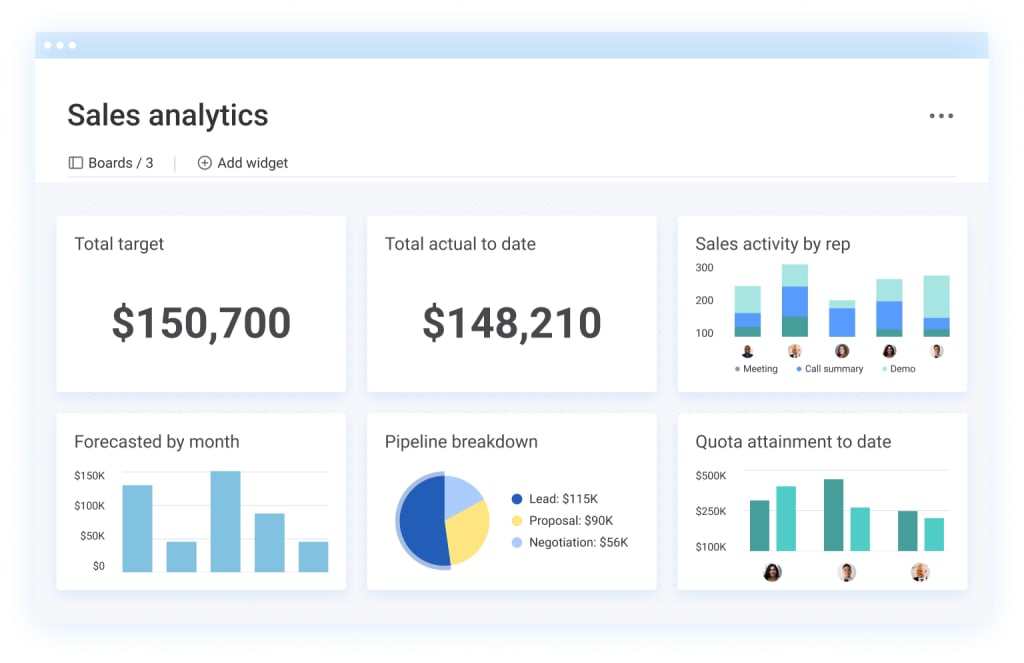Customer data is the essence of strategic planning and customer relationship building. To execute successful campaigns, companies need to acquaint themselves with their customers’ territory.
In today’s customer-centric economy, it’s critical to understand customer needs, wants, likes, dislikes, and preferred trends. And to collect this information, companies turn to—Voice of the Customer or VoC data.
Voice of Customer (VoC) aims to enhance customer experience by focusing on platforms where customers share their opinions, engage in discussions, participate in polls, and interact with a product or service.
By analyzing this feedback, businesses can shape their acquisition, retention, sales, social media, and advertising strategies. Essentially, VoC serves as the foundation for these plans.
In this article, we’ll talk about what VoC really means, examples of successful VoC programs, and methods to collect VoC data. We’ll also explain how you can use monday sales CRM to leverage your VoC data to benefit your business.
Try monday sales CRMWhat is Voice Of Customer (VoC) ?
Voice of the Customer (VoC) is the process of collecting and analyzing feedback from customers to understand their needs, preferences, and expectations. This feedback can come from a variety of sources, including surveys, social media, customer reviews, and customer support interactions.
VoC data helps businesses connect with their customers at a deeper level.
Voice of Customer program is designed to collect feedback from customers to better understand their needs and wants. It involves surveys, interviews, and focus groups to gain insights into customer experiences, opinions, and preferences. You can use this information to create more products and services that customers enjoy and advocate.
By understanding the needs and expectations of their customers, businesses can make informed decisions about product development, marketing, and customer support.
Here are some real-world examples of VoC programs:
- Starbucks: Starbucks uses a variety of VoC tools, including customer surveys, social media monitoring, and customer feedback forms in their stores. This feedback is used to improve their menu offerings, store design, and customer service.
- Airbnb: Airbnb uses VoC feedback to improve its platform and user experience. They collect feedback from guests and hosts through surveys, ratings, and reviews, and use this information to identify areas for improvement and prioritize new features.
- Toyota: Toyota Kirloskar uses a VoC program called the Customer Experience Center (CEC) to collect feedback from customers and dealers. This feedback is used to identify and address issues with their products and services, as well as to improve their overall customer experience.
Once you generate customer data, you need to organize it all in a CRM so you can get an overview of your customer’s behavior in one place.
Get startedMethods to collect VoC data
VoC data should come from multiple sources since this is the best way to gain holistic, accurate information about your customers. Here are some of our recommended data collection methods:
(Note: you can club multiple methods where it suits your purposes.)
NPS (Net Promotor Score)
Net Promoter Score (NPS) is a tool that is used to measure the loyalty of a company’s customers. NPS gives you instant feedback from customers with a simple prompt. Customers need to answer this simple question on a scale of 0–10: “How likely are you to recommend the company to a friend or a colleague?”

One example of NPS in action is with a subscription-based meal delivery service. After a customer receives their first delivery, they are sent an email with the NPS question and asked to provide a rating.
Based on the responses, the company calculates its Net Promoter Score.
Social Media
Social media is a goldmine of customer insight, but the key to uncovering it is knowing where to look. Here are three resources that can help you better understand your customers:
Social media conversations: Use social media monitoring tools to track mentions of your brand, products, or services on social media platforms. This will allow you to identify what customers are saying about your business, both positive and negative.
Ongoing conversations: Respond to customer comments and messages on social media, and ask follow-up questions to gather more information about their experience. This will show customers that you are listening and care about their feedback.
In this Twitter exchange, Dunzo, a food delivery app collects VoC data through user feedback.

Surveys: Social media platforms like Twitter and Facebook allow you to post surveys and polls, which can be a quick and easy way to gather feedback from your followers.
Live Chat
Live chat is a great tool for gathering VoC data in real-time. Here are some ideas on how to effectively use live chat to gather VoC data:
Prompt customers for feedback: Use automated chat prompts to ask customers for feedback on their experience with your brand. For example, you can ask customers if they are finding what they are looking for or if they are satisfied with the service they received.
Here’s an example of what this looks like in action:

Ask open-ended questions: Avoid closed-ended questions that can be answered with a simple “yes” or “no.” Instead, ask open-ended questions that encourage customers to provide more detailed feedback. For example, you can ask customers what they like most about your product or service, or what improvements they would like to see.
Record and analyze chat transcripts: Use chat transcripts to record customer feedback and analyze it for insights. Look for common themes and trends in the feedback, and identify areas for improvement.
Make the most of your VoC data with monday sales CRM
To leverage this data to improve your business, you need a customizable CRM with various features. monday sales CRM is a flexible and intuitive software that allows you to effortlessly track customer data. Some of its top features are:
- Trend Tracking and Forecasting:
With the ability to create custom fields and tags, you can easily segment and filter your data to identify trends and patterns in customer feedback. You can also use the forecasting feature to predict future trends and plan accordingly. Let’s say you’re the marketing manager for a popular coffee shop chain. You’re interested in understanding how your customers feel about the new pumpkin spice latte (and how their feedback might impact your sales).You use monday sales CRM to collect VoC data from your customers, asking them to rate the new drink and leave comments about their experience. Over the course of a few weeks, you collect feedback from hundreds of customers, which you upload to the CRM platform.Using monday’s Trend Tracking and Forecasting feature, you’re able to analyze the data and identify some key trends. For example, you notice that customers in a certain age group are more likely to rate the drink highly, while others find it too sweet. You also notice that feedback has been consistent over the last few weeks, indicating that the drink has maintained its popularity. Based on this data, you launch a targeted ad campaign on social media, aimed at the age group that gave the drink high ratings. On the back end, you make a small adjustment to the recipe to reduce the sweetness. monday sales CRM allows you to upload your VoC data to a centralized platform, where you can track and analyze customer feedback over time. - Comparative analysis: Use the dashboard feature on monday sales CRM tocan easily compare and contrast data from past and new customers. This allows you to track changes in customer sentiment and behavior over time and adjust your campaigns and strategies accordingly.
 By analyzing this data, you can build long-term relationships with your customers and improve their overall experience with your brand.
By analyzing this data, you can build long-term relationships with your customers and improve their overall experience with your brand. - Lead activity management:monday sales CRM also offers a lead activity management feature that allows you to track customer behavior and engagement across the sales funnel.

By monitoring the type of leads that convert to customers the quickest and most often, you can get insights into your ideal customer persona. Subsequently, you can develop strategies to serve them better and increase customer retention.
Frequently asked questions (FAQs)
What is CSAT?
CSAT stands for Customer Satisfaction Score. It defines how satisfied your customers are with a service or product on a scale of 1 to 10. The formula to determine this score is,
(Total number Top 2 responses) / (Total responses) * 100 = % of satisfied customers)
What are response rate benchmarks?
Response rates define how likely your customer is to recommend your company to their circle (similar to Net Promoter Score). This benchmark focuses on customer satisfaction and the quality of response you get from customer.
What are some other benchmarks for VoC?
CES benchmarks (Customer Effort Score), Coverage benchmarks, and Closing the loop rate benchmarks are common VoC benchmarks.
An organized CRM is your key to collecting better VoC data
CRMs provide an all-encompassing view of our customers through customized forms and activity tracking. Through monday sales CRM, you can organize data and activity across multiple columns and understand the behavior of your customers collectively. Try it today for free!


 By analyzing this data, you can build long-term relationships with your customers and improve their overall experience with your brand.
By analyzing this data, you can build long-term relationships with your customers and improve their overall experience with your brand.